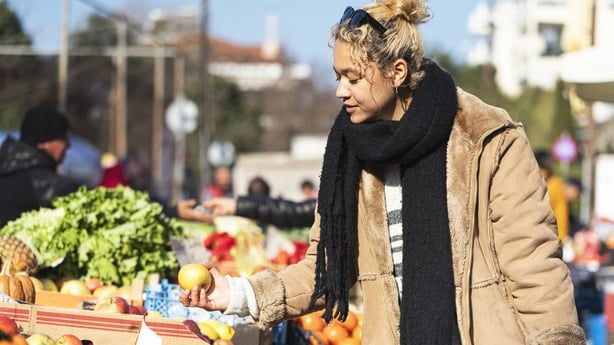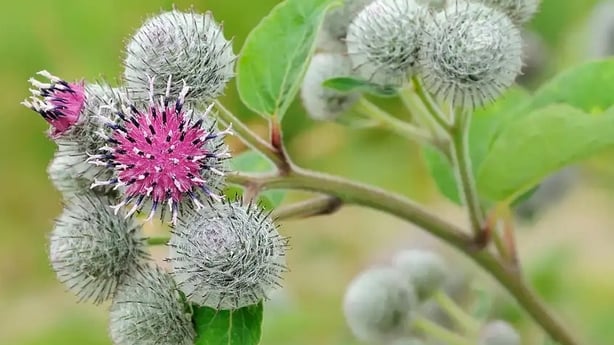Gardeners could face big challenges with climate change in years to come, including temperature extremes, droughts and flooding.
But what sustainable foods will we be growing? Will the landscape of the allotment, vegetable patch and greenhouse change, and might we be able to grow crops previously unknown to us?
Water availability is going to be one of the major issues, predicts plantsman Kevin Hobbs, co-author of new book Edible: 70 Sustainable Plants That Are Changing How We Eat.

Firstly, he says that "thirsty crops" such as tomatoes may become more difficult to grow, as they suffer if they get too wet or too dry.
"We have to think about how we grow crops like vine tomatoes and vegetable crops that need a lot of daily care and attention. Growing our vegetable crops from seed, and managing the seedlings to ensure they don’t perish in very wet or very dry conditions is another challenge," adds Hobbs.
Perennial veg may become easier to grow and more sustainable than tender crops, such as tomatoes, aubergines and French beans. "They have longer to establish their root systems and become acclimatised to the soil," he says, which will help them become more resilient. "Perennial vegetables can be incorporated among annual crops that we might be growing in our garden."
Many unusual varieties can be obtained from specialists such as Incredible Vegetables, from dwarf Jerusalem artichokes to hopniss (Apios americana), a herbaceous perennial climbing vine, which produces delicious protein-rich edible tubers, attractive vines and scented pink flowers.
These are some of the edibles Hobbs believes will be sustainable in the future…
Vine spinach
Vine spinach (also known as Malabar spinach) is a perennial vine – although in this country you may need to grow it as an annual unless you live in a really mild area, as it likes really warm temperatures and humidity and isn’t frost-tolerant. Its heart-shaped leaves twine up supports, providing an abundance of edible foliage and growing tips.
It also produces pink-white flowers in autumn followed by dark red berries, historically used for dyeing as they are bland to eat. It and can be served cooked or raw, tasting similar to regular spinach but with a slightly peppery flavour. "We should all be growing this in 10 years’ time," Hobbs predicts.

Moringa
This small tree native to the Himalayan foothills of India and Pakistan produces bean-like pods. All parts of the tree are edible, from the highly nutritious, mustard-flavoured leaves and young pods, to immature seeds, roots (which taste like horseradish) and flowers, which can be eaten cooked or raw.
It’s tolerant of dry conditions but will need overwintering in a frost-free environment, so if you plant it in a pot, bring it indoors or under shelter in the cooler months. It’s best grown under glass in the UK.
Mediterranean saltbush
"This is very easy to grow, is great for salads and is a halophyte, a plant that has adapted to grow in more saline conditions," Hobbs explains. Also known as tree purslane, it’s semi-evergreen, hardy and tolerant of drought and salt. Young growth can be harvested continuously, and it also produces striking silver foliage to add interest to the garden all year round.

Great burdock
This lowland plant found beside streams and rivers colonises disturbed areas and empty plots, and while some consider it a weed, it is actually a valuable food source, he says..
"Great burdock (Arctium lappa), which has naturalised in the UK, was a popular vegetable in medieval times and has been largely forgotten. You can easily grow it in your garden and it’s a very tasty, flavourful root vegetable and will grow in wasteland and derelict land in all sorts of soil, so it’s very easy to grow at home and tolerant of lots of conditions."
The roots, a good source of fibre and antioxidants, can be used in stir-fries, soups and stews, and chipped or roasted. It’s easy to incorporate into an ornamental garden, as it has large showy leaves and purple thistle-like flowers, Hobbs adds.
We need your consent to load this Instagram contentWe use Instagram to manage extra content that can set cookies on your device and collect data about your activity. Please review their details and accept them to load the content.Manage Preferences
Sea buckthorn
This hardy shrub or small tree has adapted to grow in harsh maritime conditions, on salt-laden sand dunes, riverbanks, forest margins and coastlines. It’s used as hedging by some gardeners, producing attractive foliage and edible berries.
Also, the plant’s network of roots stabilises the soil and fixes nitrogen. Try the berries raw or in tea or juice.
Hostas
These classic ornamental perennials, with tropical-looking leaves and spires of lavender flowers in summer, can also be eaten.
Harvest their young shoots and leaves, stalks and flowers to use raw in salads or cooked in stir-fries, or sauté or steam them. The flowers make a sweet floral-tasting addition to decorate any plate. Grow them in moist, free-draining soil in semi shade.
Gardening of the future won’t mean that we can’t grow our old favourites, Hobbs clarifies: "We will still be able to grow conventional fruit and veg in future years, but there will be greater diversity."
Edible: 70 Sustainable Plants That Are Changing How We Eat by Kevin Hobbs and Artur Cisar-Erlach is published by Thames & Hudson.

